Browse Times
1776-1783
1776
Erection of the first two Watt engines at Broseley and Tipton.
1777
Arrival of William Murdock in Birmingham.
1778
The Trent and Mersey Canal was opened to traffic.
The Catholic Relief Act enabled Catholics to register their places of worship.
1779
Opening of Birmingham’s General Hospital.
Establishment of the Birmingham Library.
Construction of the Ironbridge by Abraham Derby III spanning the River Severn at Coalbrookdale.
Samuel Crompton developed the Spinning Mule combining features of the Spinning Jenny and Water Frame for cotton spinning.
James Keir patented Muntz Metal, which could be forged or wrought when it was cold as well as red-hot.
Founding of the Derby Philosophical Society.
1780
Joseph Priestley settled in Birmingham.
Gordon Riots in London.
James Keir discovered the distinction between carboin acid gas and atmospheric air. He set up a chemical works at Tipton in the same year.
Erasmus Darwin met Samuel Galton junior
1781
The population of Birmingham reached 50,000 making it the second largest English town.
Erasmus Darwin left Lichfield for Derbyshire.
Richard Arkwright built a cotton mill at Rocester near the River Dove.
The New Hall Porcelain Company in Derby began to produce commercially successful porcelain.
James Watt developed his rotary motion.
1782
Josiah Wedgwood ordered a Boulton and Watt engine produced by Matthew Boulton and James Watt to drive a clay mill and colour-grinding mill. Etruria was the first factory to install a rotary steam engine. James Watt developed his double-acting engine.
1783
James Watt patented a rotary steam engine.
The Treaty of Paris ended the American War of Independence and Britain recognised the independence of the USA.
Publication of Thomas Day’s Sandford and Merton.
Articles in this time period
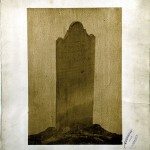
Photograph of Joseph Priestley’s gravestone
Image from: Joseph Priestley Collection by Samuel Timmins, Birmingham City Archives.

Photograph of Joseph Priestley’s house in the United States of America
Image from: Joseph Priestley Collection by Samuel Timmins, Birmingham City Archives.

Photograph of portrait of Joseph Priestley
Image from: Joseph Priestley Collection by Samuel Timmins, Birmingham City Archives.

Photograph of Priestley House, Northumberland, Pennsylvania, from South-East, showing Priestley’s Laboratory
Image from: Joseph Priestley Collection by Samuel Timmins, Birmingham City Archives.


Photograph of scientific instruments
Image from: Joseph Priestley Collection by Samuel Timmins, Birmingham City Archives.


Priestley and John Wesley
Image: Portrait of John Wesley struck off by electricity by Joseph Priestley Image from: Birmingham City Archives, Priestley… read more »


Priestley and the Church of England
Image: Bishop Samuel Horsley, one of Priestley’s main Anglican opponents. Image from: Birmingham City Archives, Priestley Collection by Samuel… read more »



Priestley in Northumberland, Pennsylvania
Image: Joseph Priestley House, Northumberland, Pennsylvania, from the south-east showing Priestley’s laboratory Image from: Birmingham City Archives, Priestley Collection… read more »
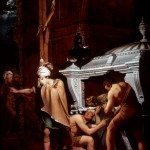

Priestley: Body, Matter and Death
Miravan Breaking Open the Tomb of his Ancestors (1772). Joseph Wright of Derby(1734-1797), Oil on canvas. Derby Museum &… read more »
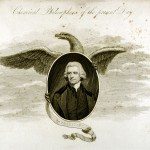

Priestley’s Arrival in America
Image: Chemical Philosophers of the Present Day, Dr Priestley. The apotheosis of Joseph Priestley. The scientist ascends into… read more »


Priestley’s Death and long-term Reputation
Image: Gravestone of Dr Priestley in the Cemetery of Northumberland, Pennsylvania. “To the memory of the Rev Dr… read more »


Priestley’s Early Career
Image: The Earl of Shelburne, Priestley’s patron from 1772 to 1780 Image from: Birmingham City Archives, Priestley Collection by… read more »
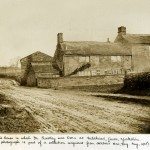

Priestley’s Origins
Image: Birthplace of Joseph Priestley, Fieldhead, Leeds, Yorkshire. Image from: Birmingham City Archives, Priestley Collection by Samuel Timmins Joseph… read more »


Remains of a Cistercian monastery called White Ladies in Shropshire
From Picturesque Views of the Severn, 1824 by Thomas Harral
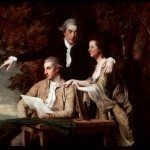

Rev. d’Ewes Coke and Family
Joseph Wright of Derby (1734-1797). Oil on canvas. Image from: Derby Museum & Art Gallery
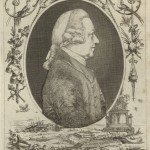

Richard Greene and 18th Century Museums
Image: Portrait of Richard Greene. Stebbing Shaw, History and Antiquities of Staffordshire, Vol.1 (London, 1798). Image from: Local Studies and… read more »


Romeo and Juliet, the Tomb Scene
Joseph Wright of Derby (1734-1797). Oil on canvas. Image from: Derby Museum & Art Gallery


Ruins of Tutbury Castle
Water colour undated, Paul Sandby (1725-1809, b. Nottingham – d. London).
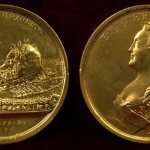

Russian Visitors to the English Midlands
Text: Olga Baird Image: Russian Medallion to commemorate the erection of Peter the Great’s statue in 1773. Peter the… read more »


Rydal Waterfall
Virgil was a famous Roman poet who died in 19 BC. His tomb was located in the… read more »


Self Portrait at the age of 20 by Joseph Wright
Joseph Wright of Derby (1734-1797). Oil on canvas. Image from: Derby Museum & Art Gallery


Silversmiths and Silverware in late 18th and early 19th century Birmingham
Image: Silver caddy spoon, probably by Samuel Pemberton, c.1800. The delicate design is created by a filigree technique… read more »


Sir John Floyer and Lichfield
Image: South-west view of Lichfield, an eighteenth century print engraved by J Ryland and published in John Jackson, History… read more »
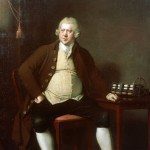

Sir Richard Arkwright: Industrialist
The art of portraiture was changing during the Industrial Revolution. The expansion of commerce and industry in… read more »


Sir Richard Arkwright: Industrialist
Image: Portrait of Sir Richard Arkwright (1789-1790). Joseph Wright of Derby, Oil on Canvas. Text: Olga Baird… read more »


Snuff Box
Inside view of Tortoiseshell snuff box, which is particularly suitable for piqué work (inlaid gold) with its… read more »


Snuff Box
This silver box is engraved with a bright-cut decoration, similar in design to several Samuel Pemberton toothpick… read more »


Study of Fragment of a Classical Frieze, Rome (1774)
Image: Joseph Wright of Derby (1734-1797), Pencil, pen and grey ink and grey wash. Image from: Derby Museum &… read more »


Tenbury
TENBURY LIES upon the borders of Worcestershire, towards the north-west, and joins the parish of Burford in… read more »


The “Bear Pit”, Cromford, Derbyshire
Known to locals as the “Bear Pit”, this example of hydraulic engineering was constructed in 1785 by… read more »


The A.V. Suvorov Medal
Image: Count Alexander Suvarow, Liberator of Italy. 1799. Designed by Conrad Heinrich Kuchler. Image from: Birmingham Assay Office (25)… read more »


The Cyclops: Addressed to the Birmingham Artisans, Anonymous
Image: Ironfounder, The Book of Trades or Library of Useful Arts, Part II, third edition (London Tabart and Co,… read more »


The Earthstopper on the Banks of the Derwent
Joseph Wright of Derby (1734-1797), Oil on Canvas Image from: Derby Museum & Art Gallery


The French Revolution Dinner 14 July 1791
Image: French Revolution Dinner. This Ticket entitles the bearer to a Bottle of Wine at the Dinner at… read more »


The Greyhound Pond, Cromford, Derbyshire
The pond was a man-made dam created in about 1785 to provide the main source of water… read more »


The Loom Shop, Cromford, Derbyshire
This three-storey building was probably Sir Richard Arkwright’s loom shop and was built between 1776 and 1786.… read more »


The occurrences of common life: Samuel Johnson, Practical Science and Industry in the Midlands
Image: 18th Century Birmingham trade token (n.d.). H Biggs halfpenny with a bust of Dr Samuel Johnson and… read more »


The Origins of Carpet Making in Kidderminster
Image: Kidderminster (c. 1777) Thomas Sanders, Perspective Views of Market Towns within the County of Worcester (c. 1777).… read more »
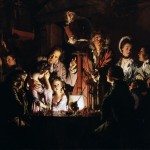

The other side of the Coin: Women and the Lunar Men
Image: Joseph Wright of Derby (1734-1797), An Experiment on a Bird in an Air Pump(Exhibited 1768). Oil on Canvas.… read more »


The Philosophical Context: From Optimism to Realism
The Widow of an Indian Chief watching the Weapons of her deceased Husband (1785). Joseph Wright of Derby 1734-1797),… read more »


The Wood Children
Joseph Wright of Derby (1734-1797), Oil on Canvas Image from: Derby Museum & Art Gallery


The Wyatts, Architects of the Age of Enlightenment
Image: An engraving of Samuel Wyatt’s classical façade for the Theatre Royal, New Street, Birmingham, from William Hutton’s History… read more »


Thomas Wedgwood: the Godfather of Photography
Image: The Alchymist in Search of the Philosopher’s Stone, (Exhibited 1771), Joseph Wright of Derby (1734-1797). Oil on… read more »
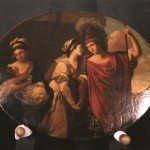

Three Ladies Adorning the Term of Hymen (The Montgomery Sisters)
Thomas Watson (1743 – 1781) after Sir Joshua Reynolds


Toothpick box
The hidden hinge and decorative features are typical of neo-classical designs.


Upper Mill, Cromford, Derbyshire
The photograph shows four buildings. The Upper Mill in the centre was constructed in 1771 as a… read more »


Upton
UPTON, IS a small but neat market town, supposed by Dr. Stukeley to have been known to… read more »
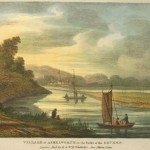

Village of Ashelworth, Gloucestershire on the banks of the Severn
From Picturesque Views of the Severn, 1824 by Thomas Harral







